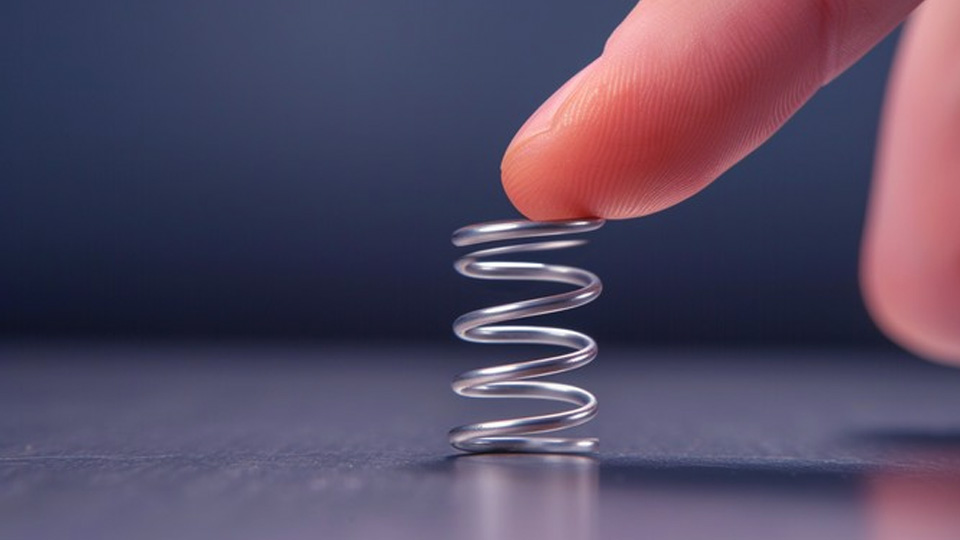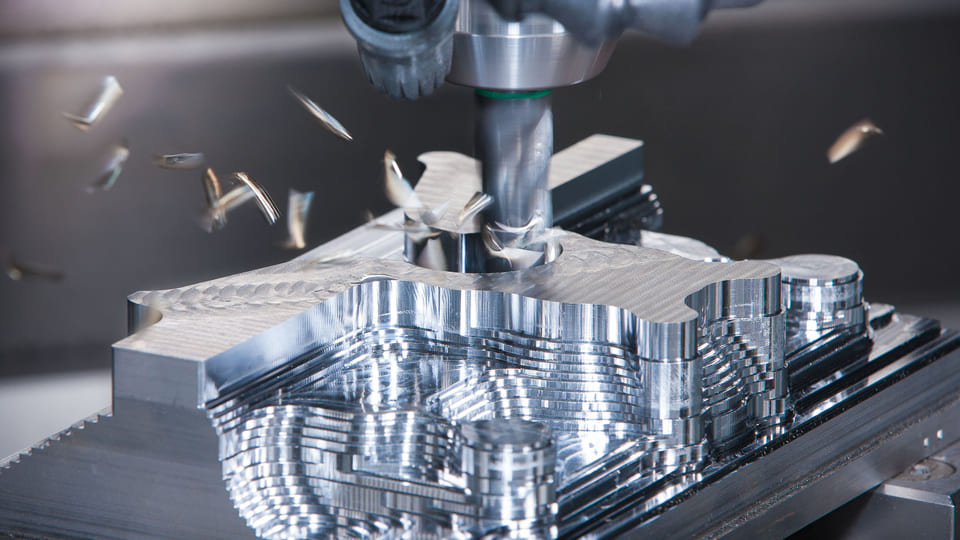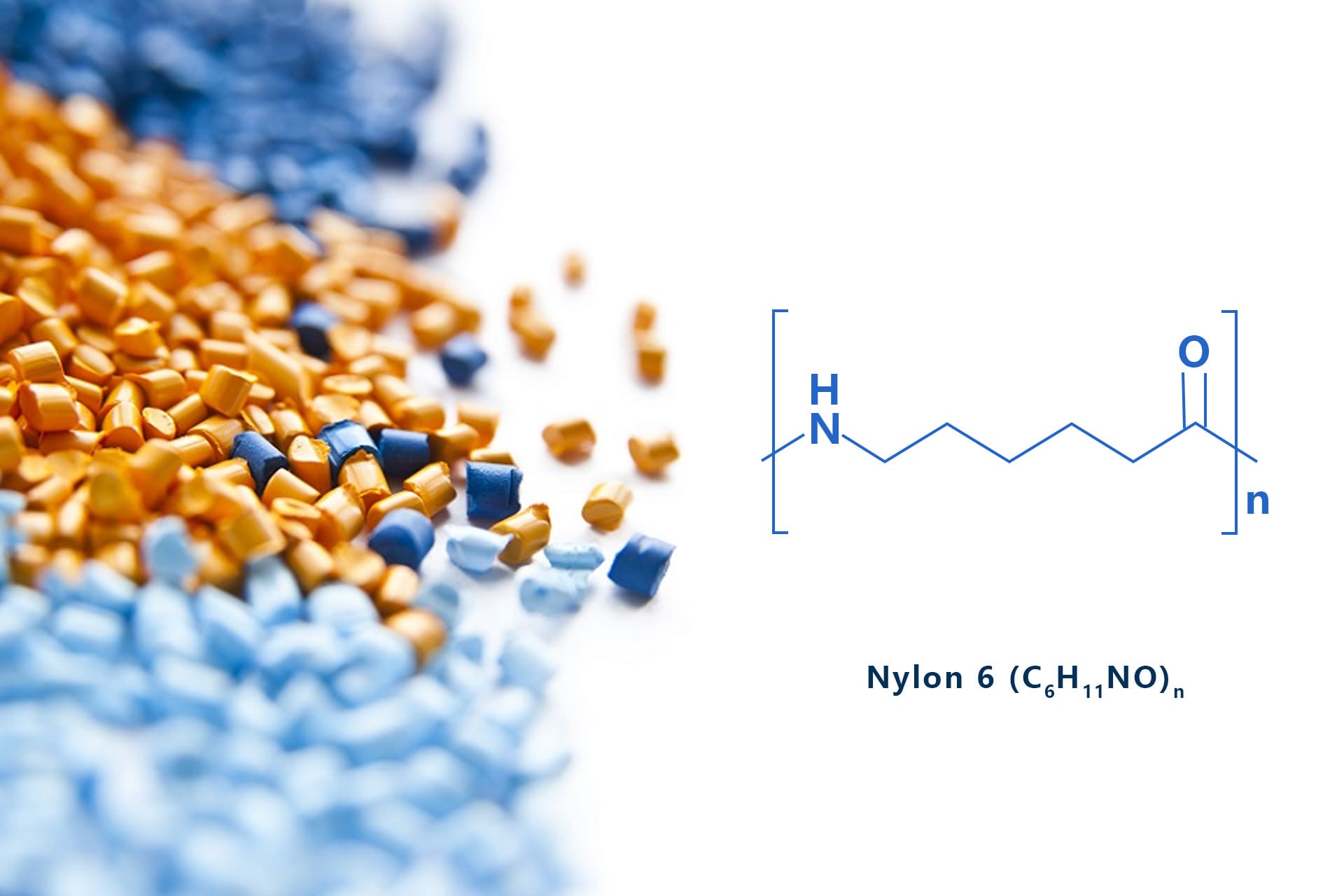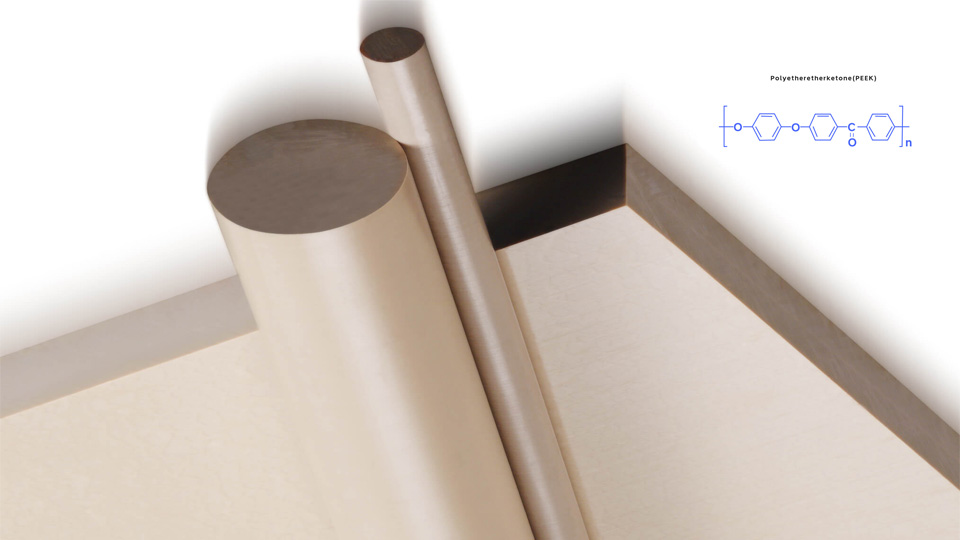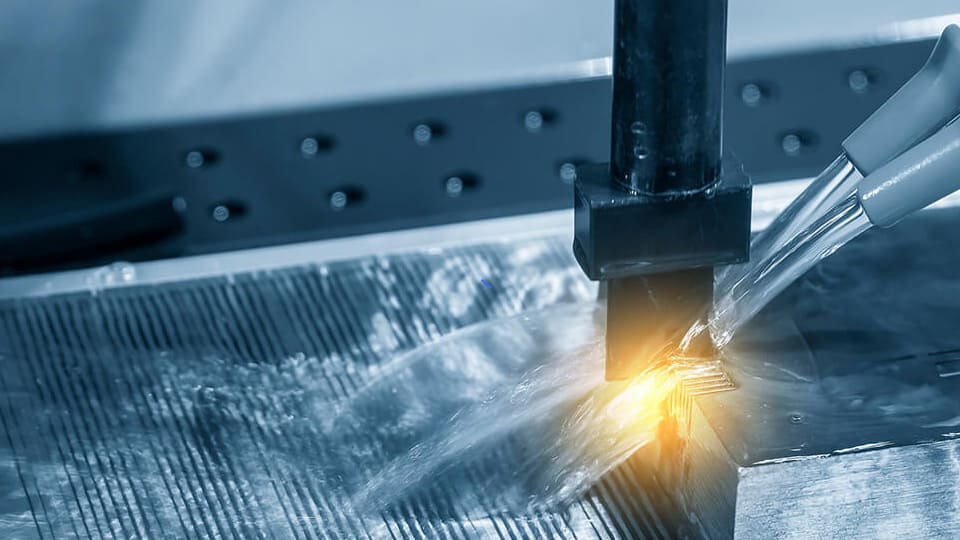When we select the material for a project, it is very important to make choices. The choice of material should be based on the mechanical properties of the material. This article will introduce you to 9 basic mechanical properties of materials: strength, plasticity, hardness, toughness, fatigue, elasticity, stiffness, wear resistance, and corrosion resistance.
Strength
(1) Tensile strength Rm
The maximum stress value that a material can withstand during the stretching process, indicating the material’s ability to resist tensile fracture.
Measurement method: tensile test. Use a tensile testing machine to clamp the prepared standard sample on the fixture of the testing machine, and apply tensile force evenly at a specified speed until the sample breaks. The tensile strength is calculated using the maximum tensile force value Fm recorded by the testing machine and the original cross-sectional area S0. It is calculated by the formula Rm = Fm/S0
(2) Yield strength Re
The minimum stress value is when the material begins to produce obvious plastic deformation. For materials with obvious yield phenomenon, yield strength refers to the minimum stress in the yield stage; for materials without obvious yield phenomenon, the stress when the residual elongation is 0.2% is usually specified as the specified plastic extension strength, which is used as the yield strength indicator of the material.
Measurement method: Through tensile test. During the test, the stress-strain curve is recorded by the testing machine, and the stress value corresponding to the yield point is determined from the curve. For materials without an obvious yield phenomenon, an extensometer needs to be installed on the sample to accurately measure the strain. When the residual elongation reaches 0.2%, the corresponding stress is the specified plastic extension strength.
(3) Compressive strength Rmc
The maximum stress a material can withstand when subjected to a compressive load.
Measurement method: Carry out a compression test. Place the cylindrical or block-shaped specimen between the upper and lower pressure plates of the pressure testing machine, and slowly apply pressure to make the specimen bear the axial compression load until the specimen is destroyed or reaches the specified deformation. Record the maximum pressure value Fmc during the test, and calculate the compressive strength through the formula Rmc = Fmc / S0 based on the original pressure-bearing area of the specimen S0.
(4) Bending strength Rmb
The ability of a material to resist failure in bending.
Measurement method: Three-point bending test or the four-point bending test is commonly used. Taking the three-point bending test as an example, a rectangular or circular cross-section specimen is placed on two supporting points, and a concentrated load is applied at the mid-span position of the specimen. During the test, the maximum load Fmb at which the specimen breaks, as well as the dimensional parameters of the specimen (such as span L, section width b, height h), are recorded, and the bending strength is calculated according to the formula Rmb = 3FmbL / 2bh2.
Plasticity
(1) Elongation A
The total elongation of the gauge length after the material breaks during tension to the original gauge length, reflecting the plastic deformation capacity of the material during the tension process.
Measuring method: After the tensile test, the broken specimens are butt-joined together and the gauge length L after breaking is measured. The original gauge length is L0 and the elongation is calculated according to the formula A = (L – L0) /L0 *100%.
(2) Sectional shrinkage Z
The maximum reduction in cross-sectional area at the fracture after the material is stretched and fractured as a percentage of the original cross-sectional area.
Measurement method: After the tensile test, measure the minimum cross-sectional area D1 at the fracture, and the original cross-sectional area D0 is used to calculate the section shrinkage rate. It is calculated by the formula Z = (D0-D1)/D0*100%
Hardness
(1) Brinell hardness (HB)
Use a steel ball or carbide ball of a certain diameter to press into the surface of the specimen with a specified test force. After the specified holding time, remove the test force and measure the indentation diameter on the specimen surface. The hardness value is calculated based on the indentation diameter.
Measurement method: Use a Brinell hardness tester, place the sample on the workbench, select a suitable indenter and test force. Start the hardness tester, press the indenter into the sample surface under the test force, and remove the test force after maintaining it for a specified time. Use a reading microscope to measure the indentation diameter, and calculate the hardness value according to the Brinell hardness calculation formula HB = 2F/πD(D -(D2-d2)1/2), where F is the test force, D is the indenter diameter, and d is the indentation diameter.
(2) Rockwell hardness (HR)
A diamond cone or steel ball is used as an indenter. The indenter is pressed into the sample surface with the initial test force and the main test force. The hardness value is determined according to the indentation depth. There are different scales for Rockwell hardness, such as HRA, HRB, HRC, etc., which are suitable for materials with different hardness ranges.
Measuring method: To operate the Rockwell hardness tester, first place the sample steadily, apply the initial test force, make the indenter in good contact with the sample surface, and then apply the main test force. Maintain the main test force for a specified time and then remove it. Read the hardness value directly from the scale on the hardness tester dial or the electronic display device. When measuring Rockwell hardness on different scales, the parameters such as the indenter type and test force are different.
(3) Vickers hardness (HV)
A regular quadrangular pyramid diamond indenter with an angle of 136° between the opposite faces is pressed into the surface of the sample under a certain test force. After maintaining the test force for a specified time, the test force is removed and the diagonal length of the indentation is measured. The hardness value is obtained by calculation.
Measurement method: Use a Vickers hardness tester, fix the sample on the workbench, and select a suitable test force. Start the hardness tester, and press the indenter into the sample surface under the test force. After maintaining the test force for a specified time, remove the test force. Use a microscope to measure the diagonal lengths d1 and d2 of the indentation, take their average value, and calculate the Vickers hardness value according to the formula HV = 1.8544F/d2, where F is the test force and d is the average diagonal length of the indentation.
Toughness
(1) Impact toughness ak
The ability of a material to absorb plastic deformation work and fracture work under impact load, expressed by the ratio of the impact work absorbed by the material when it breaks in an impact test to the cross-sectional area of the notch of the specimen.
Measurement method: The commonly used Charpy impact test. Place the specimen with the specified notch on the support of the impact tester and use the impact energy of the pendulum to break the specimen. The impact tester automatically records the energy difference before and after the pendulum impact, that is, the impact energy absorbed by the specimen Ak. Measure the cross-sectional area S at the notch of the specimen and calculate the impact toughness according to the formula ak = Ak / S.
(2) Fracture toughness KIC
It is used to measure the ability of a material containing cracks to resist crack propagation. It is an important indicator reflecting the material’s ability to resist brittle fracture.
Measurement method: Determined by fracture toughness test, such as the commonly used compact tensile test (CT test). Prepare a standard specimen with a prefabricated crack, and apply a tensile load to the specimen at a specified loading rate on a testing machine. During the test, record the load-displacement curve during crack propagation, and calculate the fracture toughness value of the material through a specific formula and method. The calculation process is relatively complicated and needs to consider factors such as the geometry of the specimen and the crack size.
Fatigue
(1) Fatigue strength σ-1
The maximum stress value of a material that does not suffer fatigue failure under infinitely many alternating loads. The maximum stress that does not suffer fatigue failure when the number of cycles reaches a certain value (such as times) is generally defined as the fatigue strength.
Measurement method: Fatigue test. Use a fatigue testing machine to install the sample on the testing machine and subject it to alternating loads of symmetrical or asymmetrical cycles. During the test, gradually adjust the load size and record the number of cycles when the sample is fatigued at different stress levels. Draw a stress-life SN curve based on a large amount of test data, and determine the maximum stress value that does not cause fatigue failure under the specified number of cycles based on the curve, which is the fatigue strength.
(2) Fatigue life Nf
The number of cycles a material undergoes from the beginning of loading to fatigue failure under a given alternating load.
Measurement method: In fatigue tests, the number of cycles from the beginning of loading to fatigue failure of the specimen under a specific alternating load is directly recorded, and this number is the fatigue life. By measuring the fatigue life under different load levels, the fatigue characteristic curve of the material can be obtained.
Elasticity
The property of a material that deforms when subjected to stress and can completely recover to its original shape and size when the external force is removed. This deformation is called elastic deformation. Within the elastic deformation range, there is a linear relationship between stress and strain, which conforms to Hooke’s law, that is calculated by the formula σ = Eε , where stress is σ, E is the elastic modulus, and the strain is ε.
a. Tensile test method: During the tensile test, the elastic behavior of the material is verified by measuring the strain generated by applying different forces in the elastic stage using Hooke’s law. The elongation under different loads is recorded, the corresponding stress and strain are calculated, and the stress-strain curve is plotted. The linear part of the curve represents the elastic stage of the material. In this stage, the stress is proportional to the strain, and the slope is the elastic modulus. In this way, the elastic properties of the material can be intuitively observed and the elastic modulus can be determined.
b. Dynamic measurement method: The elastic constants of materials are measured using the resonance method or the ultrasonic method. For example, the resonance method is to excite the resonant frequency of the material and calculate the elastic parameters such as the elastic modulus of the material, based on the relationship between the material’s geometry, mass and resonant frequency. The ultrasonic method uses the relationship between the propagation speed of ultrasonic waves in the material and the elastic properties to determine the elastic modulus by measuring the propagation speed of ultrasonic waves. These dynamic measurement methods are generally suitable for rapid and non-destructive evaluation of the elastic properties of materials, and are particularly important in industrial production and quality control.
Stiffness
The ability of a structure or component to resist deformation, usually expressed as the ratio of the applied force to the resulting deformation, is related to the elastic modulus of the material and the geometry and size of the component.
Measurement method: For simple structures or components, the stiffness can be obtained through theoretical calculation. For actual engineering structures, experimental methods can be used for measurement. For example, a loading test is performed on the beam to measure the deflection of the beam under different loads, and the stiffness of the beam is calculated based on the relationship between load and deflection. Finite element analysis software can also be used to simulate and analyze the structure to calculate the stiffness distribution and overall stiffness value of the structure.
Wear resistance
The ability of a material surface to resist wear.
Measurement method: Common test methods include the pin-on-disk wear test and the ring-block wear test. Taking the pin-on-disk wear test as an example, a pin-shaped specimen is brought into contact with a rotating disc specimen and a certain pressure is applied to perform a wear test at a certain speed and time. After the test, the mass loss or dimensional change of the pin-shaped specimen is measured to evaluate the wear resistance of the material. The wear resistance of the material can also be analyzed by observing the morphology of the worn surface and the wear mechanism.
Corrosion resistance
The ability of a material to resist corrosion from surrounding environmental media (such as atmosphere, water, chemicals, etc.).
Measurement method: There are many measurement methods. The weight loss method is to make a sample of a certain size, expose it to a specific corrosive medium, take it out after a certain period, clean it, dry it and weigh it, calculate the corrosion rate based on the mass change of the sample before and after corrosion, and evaluate the corrosion resistance of the material.
Electrochemical methods, such as polarization curve measurement and electrochemical impedance spectroscopy, can study the electrochemical behavior of materials in corrosive media and evaluate their corrosion resistance by measuring parameters like corrosion potential and corrosion current density.
In addition, there are accelerated corrosion test methods, such as the salt spray test and immersion test, to simulate the corrosion conditions in the actual use environment and quickly evaluate the corrosion resistance of the material.
About SogaWorks
SogaWorks is an all-in-one online platform for custom mechanical parts, connecting over 1,000 top-tier factories to serve startups and major companies. We offer flexible manufacturing solutions for rapid prototyping, small-volume testing, and large-scale production with services like CNC machining, 3D printing, urethane casting, and injection molding. With our AI-powered quoting engine, SogaWorks can deliver quotes in 5 seconds, match the best capacity, and track every step. This cuts delivery times and boosts product quality.
